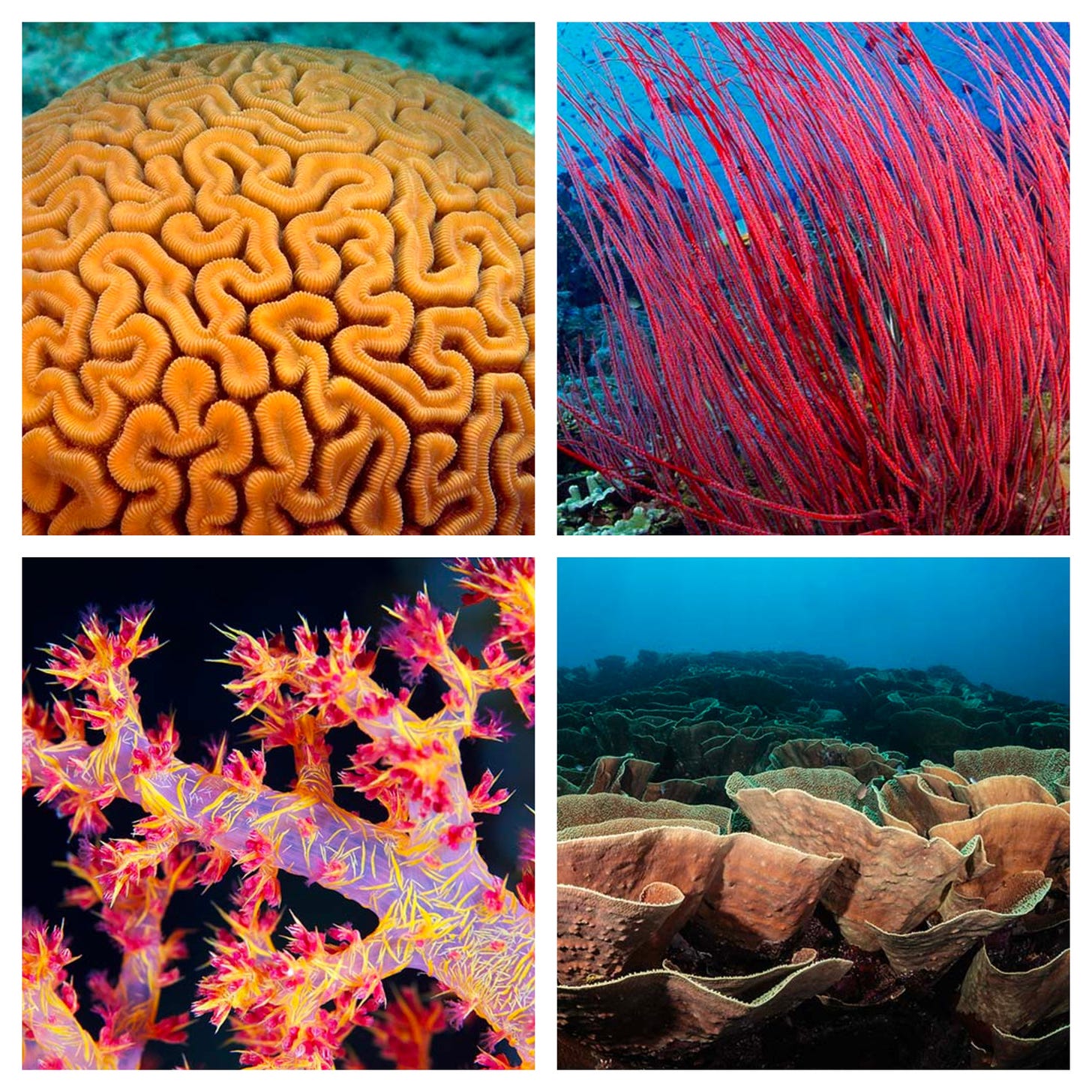Corals: What are they exactly?
A picturesque dive into the world of corals to understand what they are
From the 4 pictures you see below, what do you identify with when I say “corals”? Is it one of them or all of them? Do you think of them as something as hard as a brick or as soft as a pillow? Is this one animal, plant, or someone from Jaadu (Indian E.T) lineage?
All of the above are corals :)
Corals are the starting point in my quest to understand more about the oceans. My wonderfully ignorant brain thought that when someone says corals, they usually refer to some creepy spine-tingling huge-ass animal-rock-plant amalgams that also refer to other organisms such as clams, mussels, algae and are located everywhere underwater from the shore to the Mariana Trench.
If you are on the same page, then I am glad, because we are going to get to know much more about corals by taking a deep picturesque dive into their world in this first post of my coral mini series!
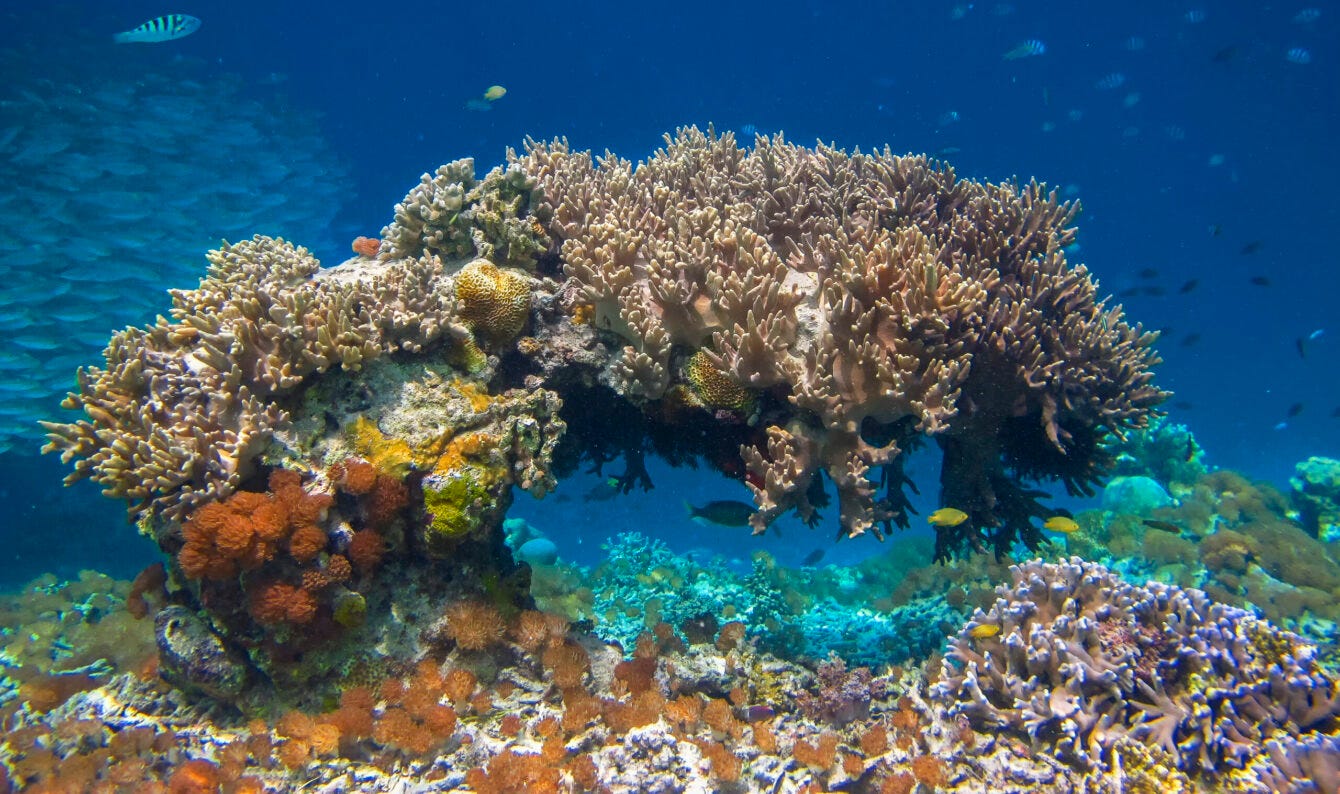
To start off, corals are simply animals. They are marine invertebrates (don’t have a vertebral column). They are beautiful beings that live in symbiosis with other organisms (more on that in a minute).
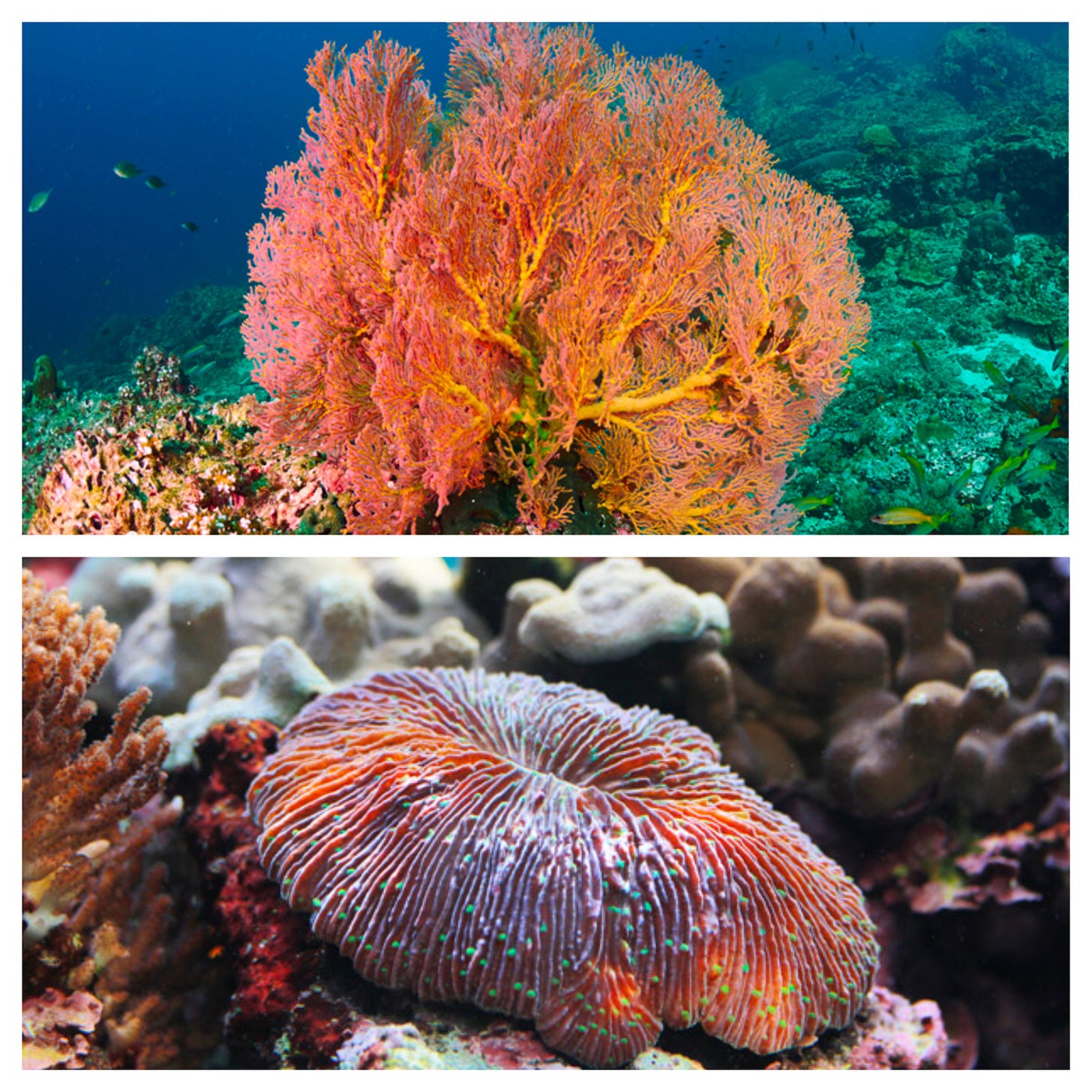
What we refer to as a coral, as shown in the above pictures, is “usually” actually a colony of tiny individual organisms called coral polyps who are living together. Think of them as residents in a big apartment complex (where the apartment complex is that big chunk that we come across in the oceans and call coral). These are individual animals, usually a millimetre or so in diameter, that together form the “coral” that we see in the oceans.
Below, in the first row, you can see diagrams of a generic coral polyp and an Acropora hard coral while in the final two rows, you can see the actual coral polyps on the left with the coral they form on the right.
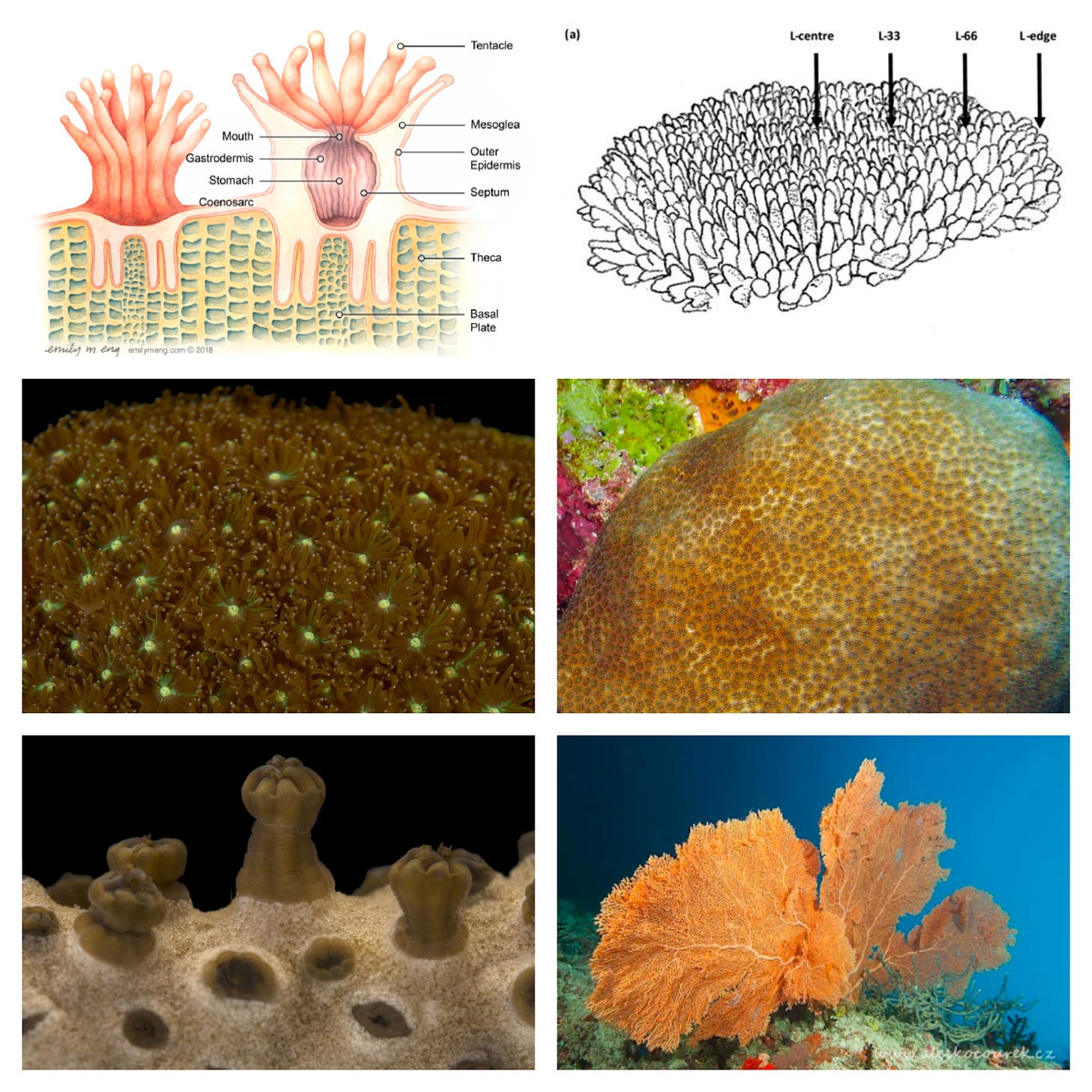
So, how are these big coral colonies formed from one single coral polyp? Coral polyps are born when an already existing colony of such polyps decides to sexually reproduce. Sperm and eggs are released in the water by the polyps of the colony which, joining together, form coral larvae. These larvae swim and settle onto hard surfaces in the oceans. A single larva then then grows into a single coral polyp with time and asexually reproduces by dividing in half, a process called budding, through which it builds its colony.
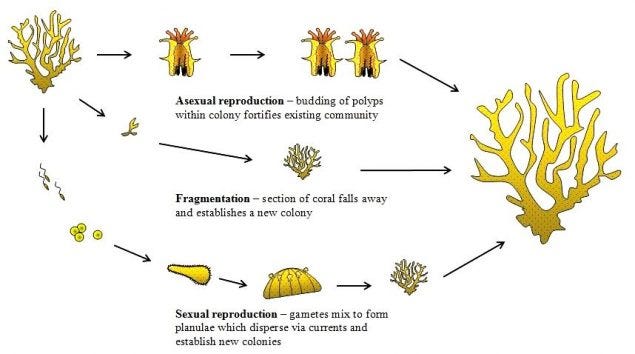
Interestingly, when you look at a coral polyp or coral, often the ‘skin’ or the substance that you see is not the body of the animal but rather a protective skeleton they form using calcium carbonate (limestone) from seawater. This skeleton, exoskeleton, protects them from harm and allows individual polyps to connect to each other and form a colony! If you have ever held a hard dead coral remain, that’s the skeleton you are holding onto.
You are dressing up as a coral skeleton on your next Halloween right? ;)
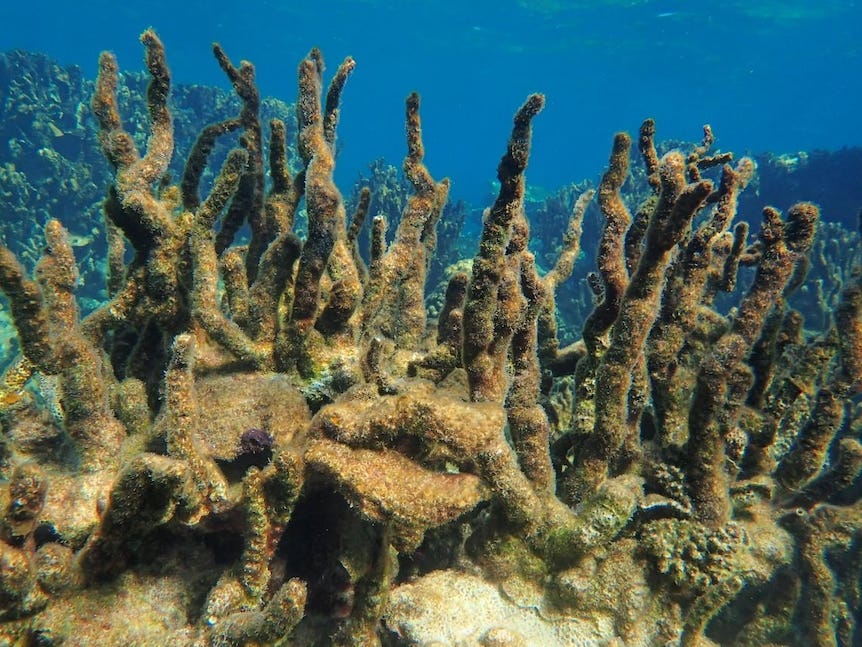
Yeesh. Dead corals is not a fun topic. Going back to when they were alive, if coral polyps are individual animals, then they will probably eat, sleep, drink, and breathe just like us no? Before we answer that, let’s understand the role of another organism living inside a coral!
All coral polyps have an algae (plant-like creatures) called Zooxanthellae living inside their tissues. These algae live in a symbiotic relationship with polyps. They get protection from predators by living inside corals along with the carbon dioxide and water (byproducts of the polyp’s respiration) they need for photosynthesis (because they are plant-like) while helping coral polyps produce fats, proteins, carbohydrates, and calcium carbonate by supplying them with glucose, glycerol, and amino acids (products of photosynthesis). Around 90% of these compounds produced during photosynthesis are transferred to the coral polyp tissue! So they are super important for the coral and corals have evolved to live with them. Without them, most would just die off.
Pssst: Zooxanthellae are also responsible for the color that you see on corals. Corals look whitish without these algae!

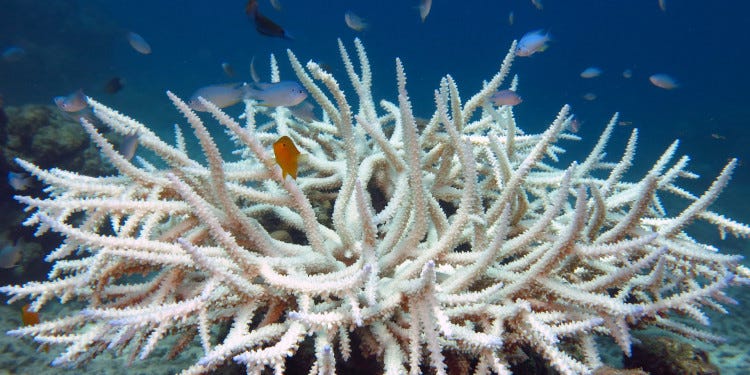
Now, to answer the aforementioned questions.
Eat: They eat by catching small organisms called zooplankton with their tentacles and also get energy from the byproducts of photosynthesis performed by the zooxanthellae.
Sleep: Since sleep refers to a state where there is dormancy observed in the brain activity, breathing patterns, heart rate, etc., corals don’t “sleep” sleep as they don’t have a heart or a brain. However they do show patterns in activities that match the Circadian rhythm.
Drink: They are marine animals and thus don’t really drink water like we do. However they do use water for other uses like constructing calcium carbonate around themselves.
Breathe: Finally, coral polyps breathe by using the oxygen that the zooxanthellae produce during photosynthesis.
Let’s come to one final question. We know what corals and coral polyps are, so what are coral reefs exactly?
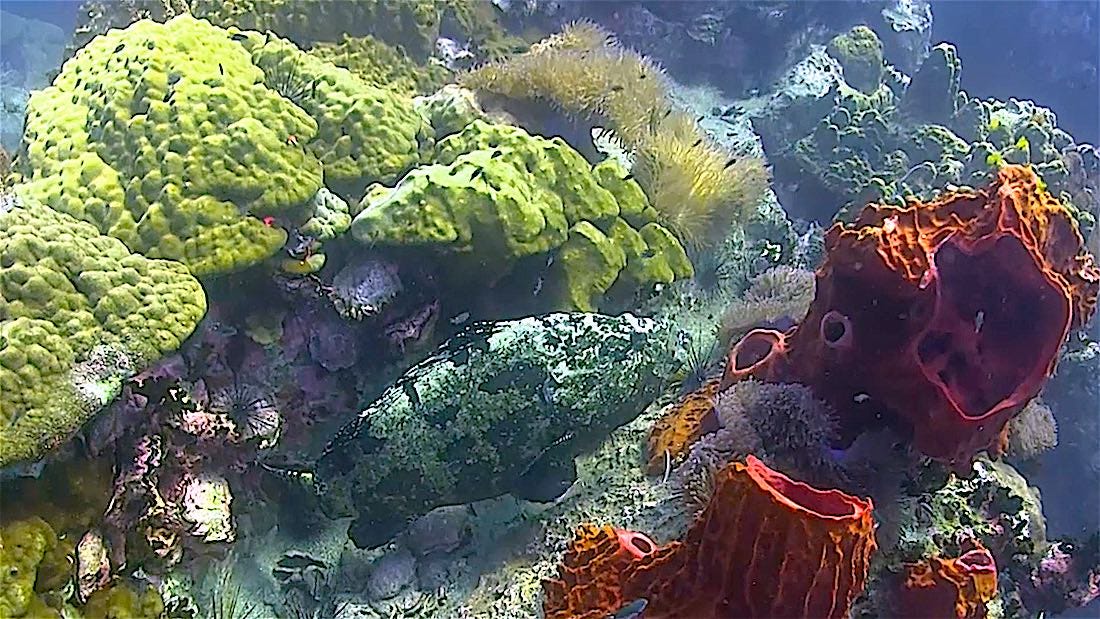
Coral reefs or reefs are simply huge marine ecosystems consisting of underwater structures created by a lot of hard corals (the ones that build a hard skeleton around them) together that have been building on top of one another’s skeletons over years! The entire structure formed from thousands of such coral polyps connected to each other through their exoskeletons is called a coral reef. These structures are usually located close to the surface and host a huge number of organisms such as algae, clams, etc., act as nurseries for fishes, and help in keeping the ocean alive, beautiful, and a little less scary!
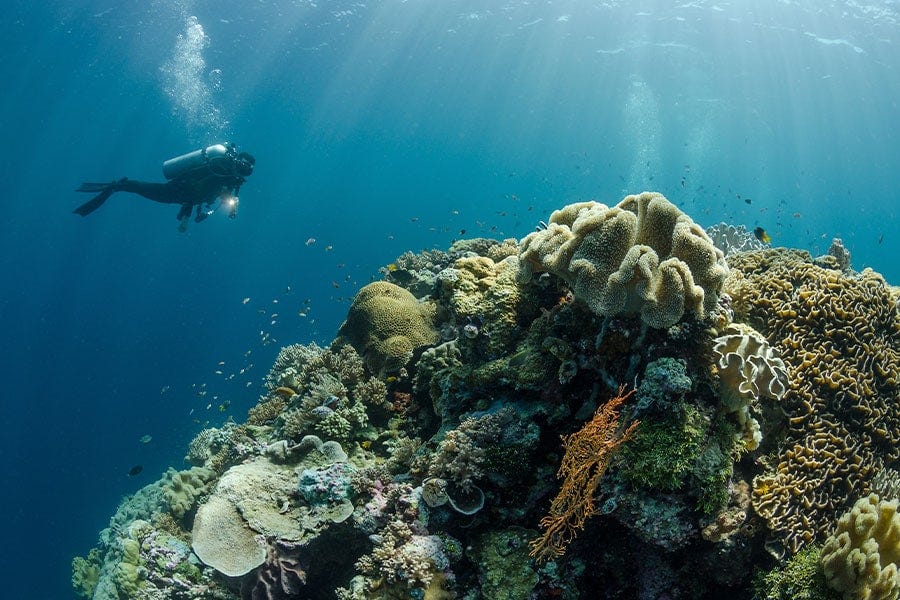
I am hoping that this post helped you know a tiny bit more about corals! Corals are super important to us and under a lot of threat!!! Maybe, we will explore them a bit more in some of the future posts :)
References/To Read More
Corals 101 course: https://www.livingoceansfoundation.org/education/portal/
Common coral questions addressed: https://floridakeys.noaa.gov/corals/welcome.html?s=explore
More information about coral Polyps: https://lirrf.org/meet-mighty-coral-polyps/
Coral Reproduction: https://floridakeys.noaa.gov/corals/reproduce.html#:~:text=Once%20in%20the%20water%2C%20larvae,to%20grow%2C%20dividing%20in%20half.
Deep-sea corals: https://ocean.si.edu/ecosystems/coral-reefs/deep-sea-corals
Understanding Zooxanthellae: https://oceanservice.noaa.gov/education/tutorial_corals/coral02_zooxanthellae.html#:~:text=Most%20importantly%2C%20zooxanthellae%20supply%20the,carbohydrates%2C%20and%20produce%20calcium%20carbonate.
Do corals sleep at night: https://petfishonline.com/do-corals-sleep/




